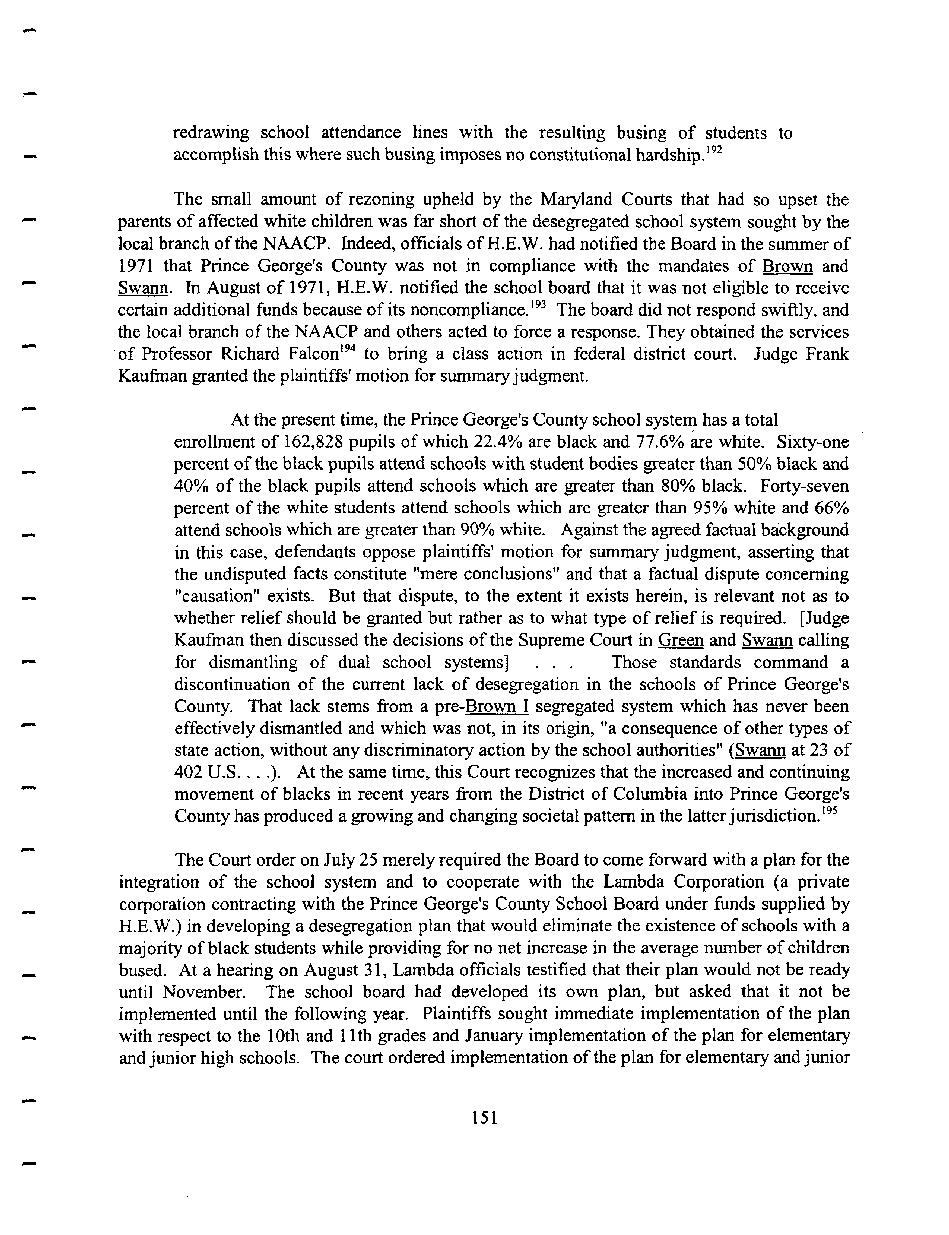|
redrawing school attendance lines with the resulting busing of students to
accomplish this where such busing imposes no constitutional hardship.192
The small amount of rezoning upheld by the Maryland Courts that had so upset the
parents of affected white children was far short of the desegregated school system sought by the
local branch of the NAACP. Indeed, officials of H.E.W. had notified the Board in the summer of
1971 that Prince George's County was not in compliance with the mandates of Brown and
Swann. In August of 1971, H.E.W. notified the school board that it was not eligible to receive
certain additional funds because of its noncompliance.193 The board did not respond swiftly, and
the local branch of the NAACP and others acted to force a response. They obtained the services
of Professor Richard Falcon194 to bring a class action in federal district court. Judge Frank
Kaufman granted the plaintiffs' motion for summary judgment.
At the present time, the Prince George's County school system has a total
enrollment of 162,828 pupils of which 22.4% are black and 77.6% are white. Sixty-one
percent of the black pupils attend schools with student bodies greater than 50% black and
40% of the black pupils attend schools which are greater than 80% black. Forty-seven
percent of the white students attend schools which are greater than 95% white and 66%
attend schools which are greater than 90% white. Against the agreed factual background
in this case, defendants oppose plaintiffs' motion for summary judgment, asserting that
the undisputed facts constitute "mere conclusions" and that a factual dispute concerning
"causation" exists. But that dispute, to the extent it exists herein, is relevant not as to
whether relief should be granted but rather as to what type of relief is required. [Judge
Kaufman then discussed the decisions of the Supreme Court in Green and Swann calling
for dismantling of dual school systems] . . . Those standards command a
discontinuation of the current lack of desegregation in the schools of Prince George's
County. That lack stems from a pre-Brown I segregated system which has never been
effectively dismantled and which was not, in its origin, "a consequence of other types of
state action, without any discriminatory action by the school authorities" (Swann at 23 of
402 U.S... .). At the same time, this Court recognizes that the increased and continuing
movement of blacks in recent years from the District of Columbia into Prince George's
County has produced a growing and changing societal pattern in the latter jurisdiction.195
The Court order on July 25 merely required the Board to come forward with a plan for the
integration of the school system and to cooperate with the Lambda Corporation (a private
corporation contracting with the Prince George's County School Board under funds supplied by
H.E.W.) in developing a desegregation plan that would eliminate the existence of schools with a
majority of black students while providing for no net increase in the average number of children
bused. At a hearing on August 31, Lambda officials testified that their plan would not be ready
until November. The school board had developed its own plan, but asked that it not be
implemented until the following year. Plaintiffs sought immediate implementation of the plan
with respect to the 10th and llth grades and January implementation of the plan for elementary
and junior high schools. The court ordered implementation of the plan for elementary and junior
151
�
|

